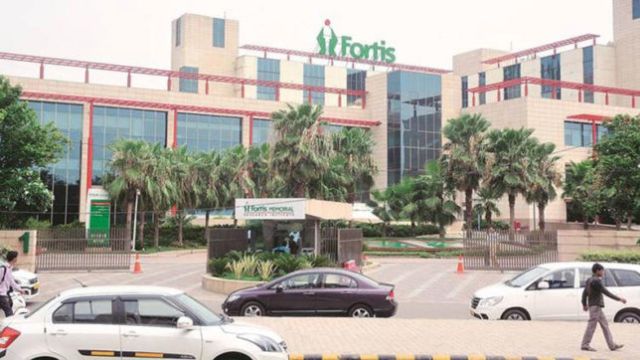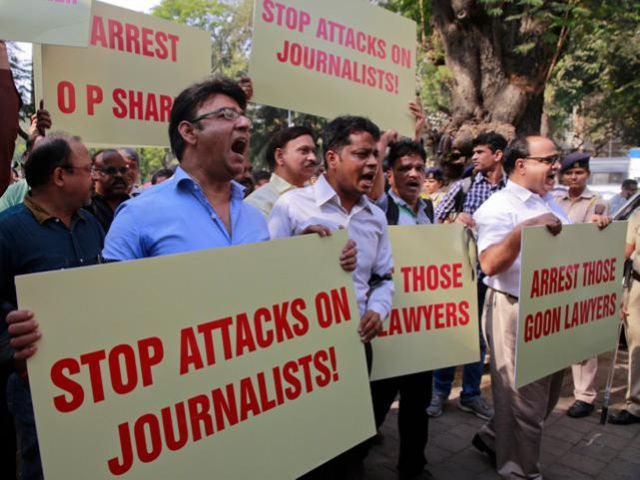
by admin | May 25, 2021 | Opinions
 By Amit Kapoor,
By Amit Kapoor,
Cities and regions always have a variety of factors that come into play to pull them out of anonymity.
For Bengaluru it was favourable weather and a growing pool of engineers graduating from the colleges surrounding it and favourable weather. For New York it was the proximity to the sea and the incoming stream of immigrants. The story of Gurgaon (now Gurugram) was similar. In some ways, the story began with the setting up of the industrial plant by Maruti Suzuki in the city. The recent announcement by the company to relocate out of Gurugram, therefore, presents a unique insight into the causes of rise and fall of cities.
Gurugram’s rise coincided with India’s larger move towards a more open economy from the mid-1980s, which later gathered momentum in early 1990s. A bulk of the city’s industrial base began developing before this period when Maruti Suzuki came into the picture in 1981 — a time when Gurugram was just a village that was struggling to develop into a town. Again, multiple factors played a role in attracting the company to the region, but it became a magnet for other manufacturing firms to shift base as well.
The city’s fortunes changed further in early 1990s with the introduction of market reforms that led to the emergence of India’s outsourcing industry. Multinational companies started looking for office space to house thousands of employees in call centres. Gurugram, which had availability of cheap land in abundance owing to favourable land acquisition policies and development of a robust real estate industry by private players like DLF, proved to be an attractive location for these companies. The proximity to Delhi and the airport also worked in its favour.
The only complexity that ailed the city was an utter lack of basic infrastructure like electricity, water supply and security, among other amenities. Despite these challenges Gurugram has been able to emerge as one of the world’s biggest outsourcing hubs. The agglomeration of firms invested in the basic infrastructural development of the city by bringing in private players that provided power backups due to shortage of electricity, security personnel due to safety concerns, borewells for water scarcity etc.
The benefits of these investments were collectively accrued by the firms as the new business formation that took place in the region attracted diverse talent pool ranging from technical experts to creative minds. The well-educated urban professionals that moved to work for big corporations stimulated the process of urbanisation. This led to the doubling of Gurugram’s population between 2001 and 2011, from 876,000 to more than 1.5 million. Due to the inefficiency of the government, residents’ organisations started pooling money to build parks, fix potholes and to provide for other basic services.
But the private players providing services in the city have created additional problems. For starters, the groundwater level in the city has depleted due to the private borewells and the lack of proper sewage system has polluted nearby rivers and lands. This unplanned urbanised and developed city is now facing the disadvantages of spatial clustering. The excessive clustering of businesses and people has led to overcrowding, increased land prices, and longer commuting timing.
All of these factors make a region unproductive for business and the developmental cycle of a city comes full circle. The causes of agglomeration that had brought about the success of a city in the first place become inimical to its own progress. The relocation of Maruti’s plant is symbolic of such a deagglomeration phase of development for Gurugram.
However, this does not necessarily imply an inevitable demise for the city. New York city, which was an economic centre for America as the shipping route for the country passed through it, managed to find itself on the brink of bankruptcy by the 1970s as commodity shipping moved northwards to a larger canal. But the city quickly reinvented itself into a financial hub as the country moved towards a service-based economy where economic density and human capital are valued more than infrastructural facilities. Another American city, Detroit, which was a manufacturing hub at one point of time, failed to make a similar transformation with the times and perished in the process.
Gurugram needs to reinvent itself if it has to survive. The existence of a thriving services hub in the form of its outsourcing and off-shoring industry works well in its favour. But the government needs to step in to address the issue of resource exploitation that was bound to ensue with higher dependence on private solutions for public services. At the same time, the state government should also utilise this opportunity to build manufacturing clusters in surrounding suburban cities, which can serve the purposes which Gurugram cannot any more. Such opportunities of regional and cluster development should not be missed.
(Amit Kapoor is chair, Institute for Competitiveness. The views expressed are personal. He can be contacted at amit.kapoor@competitiveness.in and tweets @kautiliya. Chirag Yadav, senior researcher, Institute for Competitiveness, has contributed to the article)
—IANS

by admin | May 25, 2021 | Corporate, Corporate Buzz, Investing, Markets, News, Property
 Gurugram : The Haryana Real Estate Regulatory Authority (HRERA) is all set to supervise directly an incomplete residential project in Gurugram and has already seized the bank accounts of the developers concerned, said Authority’s Chairman on Friday.
Gurugram : The Haryana Real Estate Regulatory Authority (HRERA) is all set to supervise directly an incomplete residential project in Gurugram and has already seized the bank accounts of the developers concerned, said Authority’s Chairman on Friday.
HRERA chief K.K. Khandelwal said that real estate developer Orris and Three C-Shelter Infrastructure allegedly cheated homebuyers who invested in the developer’s project proposed in Sector 89 here.
Khandelwal said that taking direct supervision by authority of any stalled project is first of its kind in the country.
Addressing the media, Khandelwal said that Orris obtained licence for the residential project over a 47-acre plot in 2011 and later signed a contract with Three C-Shelter Infrastructure.
Acting on the grievances of homebuyers of Greenopolis, the incomplete residential project, HRERA has appointed M.S. Turan as the Investigation Commissioner.
Khandelwal said that all the stakeholders of the project will be part of the investigation.
Quantum Infrastructure has been assigned the task to conduct quantity survey of the stalled project.
“Three C-Shelter Infrastructure was supposed to construct all the flats or houses with 35 per cent share with Orris but failed to do so. Both firms allotted 1,862 units and were supposed to deliver all units by Dec 2015 but they did not keep their promise,” Khandelwal said.
“Allottees paid more than 80 per cent of the amount against units they booked but to date, just 40 per cent work has been completed,” he said.
“Accounts of both builders have been seized and they will be able to withdraw amount to only fulfil the stalled construction needs in the supervision of appointed authority,” he added.
He said that the probe will be completed in a stipulated time frame and the Investigation Commissioner will submit its report in two months.
The Investigation Commissioner was appointed under Section 35 of H-RERA Act 2016.
“August 28 has been fixed the next date of hearing in the case,” he further added.
Due diligence — an investigation or audit of a potential investment firm — will done into the financial transactions executed by the “tainted” builders.
—IANS

by admin | May 25, 2021 | News, Politics
 Gurugram : A protest march under the banner of the Sanyukt Hindu Sangharsh Samiti was taken out here on Monday to demand cancellation of an FIR against six youths on the charge of disrupting ‘namaz’ on government land.
Gurugram : A protest march under the banner of the Sanyukt Hindu Sangharsh Samiti was taken out here on Monday to demand cancellation of an FIR against six youths on the charge of disrupting ‘namaz’ on government land.
The protesters gathered at the Kamla Nehru Park and marched to the Mini Secretariat, where they handed over a memorandum to the Additional Deputy Commissioner for forwarding it to Haryana Chief Minister Manohar Lal Khattar.
Six persons were arrested after an FIR was filed at the Sector 53 police station on Thursday evening for allegedly disrupting the Muslim prayers at an open ground in Sector 53 and threatening those offering prayers.
The FIR was registered against Arun, Manish, Deepak, Mohit, Ravinder and Monu on charges of hurting religious feelings, disturbing religious worship, and criminal intimidation under the Indian Penal Code on a complaint by Wajid Khan and Nehru Yuva Sangathan Welfare Society Chairman Hazid Shahzad Khan.
Gurugram Police said the accused hailed from Wazirabad and Kanhai villages and did not owe allegiance to any right-wing group.
Civil Judge Neetika Bharadwaj had on Sunday granted bail to the six accused on technical grounds as police did not follow proper procedure before booking them.
The court also took into consideration the fact that the authorities did not give permission for holding the prayers on government land.
Former Gurugram Bar Association President Kulbhushan Bharadwaj, the counsel of the accused and who led the protesters, said: “People were conducting prayers on government land in front of a temple near Wazirabad without permission from authorities. Besides, police did not follow proper procedure for registering the FIR. Police also admitted in court that permission had not been given for conducting prayers.”
“Efforts have been made in the past to vitiate atmosphere by pro-Pakistan slogans after prayers. When some youths stopped them from doing so, police took one-sided action and sent six of them to jail. A large number of these Muslims are from Bangladesh and don’t possess proper identification documents.” said the memorandum submitted by the protesters.
—IANS

by admin | May 25, 2021 | News
 New Delhi : The Fortis Memorial hospital in Gurugram charged 1,208-1,737 per cent more than procurement price for much of the medical equipment, including disposable syringes and three way stop cocks, to the parents of seven-year-old dengue patient Adya who had died at the hospital despite undergoing treatment for two weeks, according to the National Pharmaceutical Pricing Authority (NPPA).
New Delhi : The Fortis Memorial hospital in Gurugram charged 1,208-1,737 per cent more than procurement price for much of the medical equipment, including disposable syringes and three way stop cocks, to the parents of seven-year-old dengue patient Adya who had died at the hospital despite undergoing treatment for two weeks, according to the National Pharmaceutical Pricing Authority (NPPA).
The national pricing body, through its letter dated November 25, had sought all the copies of the invoice/bills raised, name of the medicines administered to the patient along with details of quantity or price charged to the patient.
According to the bills uploaded to the NPPA website, after they were submitted to it, the procurement cost of the disposable syringes were Rs 15.29 but the family was charged Rs 200 per syringe. The procurement prices for three way stop cocks, used for infusion and invasive blood pressure monitoring, was Rs 5.77, however, the hospital charged the parents Rs 106 per unit, making them earn a margin of 1,737 per cent.
Other equipments such as pressure monitoring line of 200 cm was procured by hospital at Rs 17 while the parents were charged Rs 225 per pressure monitoring line, making the hospital earn a margin of 1,201 per cent.
The hospital had procured suction catheter thumb control for Rs 7.65 but the family was charged Rs 64 per piece.
According to the reports, the hospital charged the patient’s family for every medical equipments by over 25 to 1,208 per cent.
“NPPA will be taking up necessary action as per the existing law, ” said an order by the NPPA issued on Friday.
Adya, a Class 2 student, developed high fever on August 27. Her Dwarka-based family said they rushed her to Rockland Hospital in Dwarka two days later.
Tests confirmed she was suffering from dengue. However, since her condition worsened and Rockland suggested that she be transferred to another hospital, she was taken to Fortis where she remained on life support for two weeks.
Fortis raised a bill for 1,600 gloves, 660 syringes, high-end antibiotics, and sugar strips, according to family member.
“On September 14, an MRI revealed extensive damage to the brain. We decided to take her to another hospital, but Fortis doctors refused to even facilitate an ambulance,” the girl’s father had said in a statement when the case came into limelight.
Adya died September 14-15 midnight while being shifted to Rockland Hospital without life-support equipment in the ambulance.
The case came to light after bereaved father Jayant Singh’s friend posted it on Twitter on November 17, recounting how the family was billed “Rs 16 lakh, including for 1,600 gloves” but the girl could not be saved.
According to the reports of NPPA, the highest margins were earned in consumables such as like syringes, catheters, IV sets, blood transfusion sets, gloves and masks. The hospital constituted, along with drugs 30-40 per cent of most hospital bills.
The pricing body also in its reports unveiled that the hospital earned 900 per cent margins on some non-scheduled drugs and up to 300 per cent on many scheduled (under price control) drugs.
“The blood transfusion sets which were procure at Rs 12.85 were charged for Rs 126 with 881 per cent margin and gloves for examination were procured for Rs 1.34 but sold at Rs 9.50 with a margin of 609 per cent,” said the NPPA, adding three-way extension line was procured for Rs 18.48 while it was sold at Rs 225 with a margin of 1,118 per cent.
Following the incident, two FIRs, including that of culpable homicide, have been registered against Gurugram’s Fortis hospital management and doctors.
The hospital will also face civil action on three counts in the case, a Haryana government official told IANS, adding that Health Minister Anil Vij had already ordered for both criminal and civil action against the Fortis Memorial Research Institute.
—IANS

by admin | May 25, 2021 | Media, News, Politics
 New Delhi : The Press Club of India on Monday condemned the police assault on reporters and cameramen while the latter were covering the protest by parents against the Ryan International School in Gurugram on Sunday over a seven-year-old’s murder inside the premises last week.
New Delhi : The Press Club of India on Monday condemned the police assault on reporters and cameramen while the latter were covering the protest by parents against the Ryan International School in Gurugram on Sunday over a seven-year-old’s murder inside the premises last week.
In a statement here, the journalists body said it strongly condemned “the brutal assault and lathicharge on mediapersons by the Gurugram police while they were on duty covering the protest by enraged parents….”
“At least half a dozen reporters, photojournalists and news camerapersons sustained injuries in the lathicharge. Many video cameras, belonging to ANI and Total TV, were smashed by the police for which there was no provocation,” it said.
The Press Club of India said the media was “only discharging its duty, covering the protest outside the school” and added that the lathicharge targeting the mediapersons “was uncalled for and unprovoked”.
At least 50 people, including nine scribes and photo journalists, were injured when police baton-charged a group of people protesting the brutal murder of Pradhuman Thakur and demanded action against the school management.
The Club demanded an “impartial inquiry into the incident and fixing of accountability for it”.
It also asked for adequate compensation to the injured mediapersons for their injuries and damage caused to their equipment.
On September 8, Pradhuman was found with his throat slit inside the washroom of the school located in Bhondsi on Sohna Road.
Inspector Arun Kumar, chief of Sohna police station, was suspended on Monday for using force against journalists for “his lapse in duties”, a senior Haryana government official said.
—IANS





